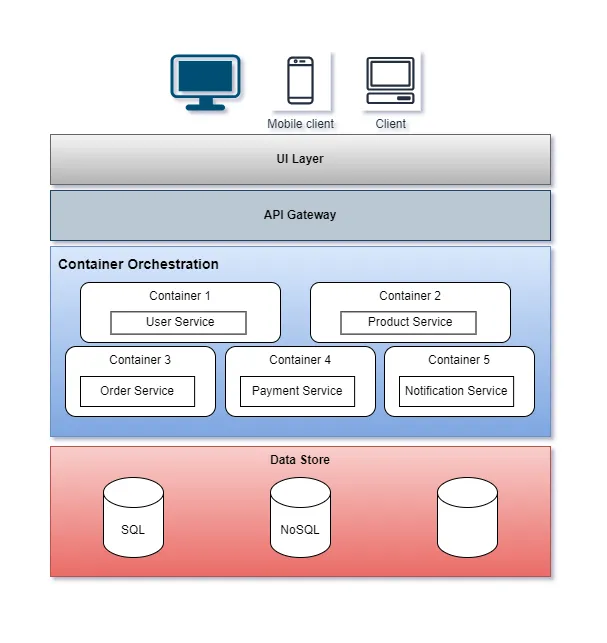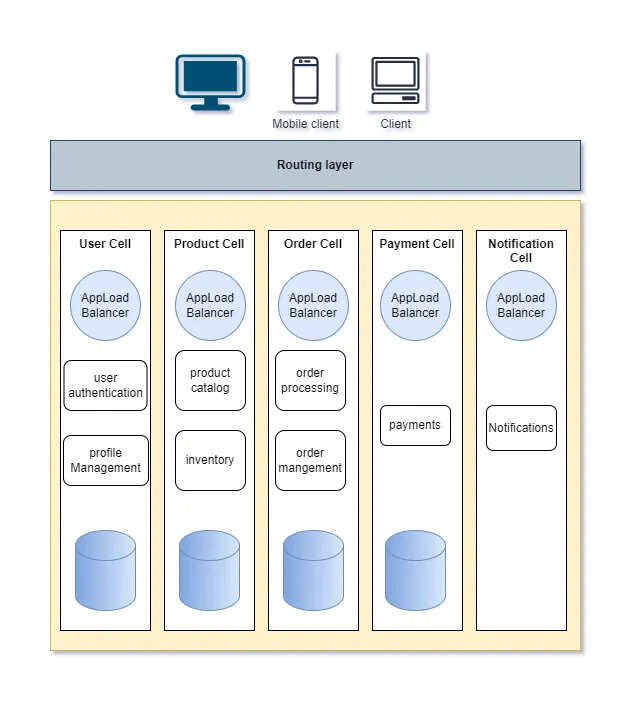Understanding Cell-Based Architecture and the Differences from Microservices Architecture
Introduction
In the world of software architecture, two prominent methodologies have emerged to address the challenges of building, deploying, and scaling modern applications: Microservices Architecture and Cell-Based Architecture. While they share many similarities, they also have distinct differences that make each suitable for different scenarios. This article will delve into the intricacies of these architectures, highlighting their key characteristics, benefits, and providing sample designs to illustrate their differences.
Microservices Architecture
Microservices Architecture is an architectural style that structures an application as a collection of small, loosely coupled services. Each service is designed to perform a specific business function and can be developed, deployed, and scaled independently.
Key Characteristics
- Service Independence: Each microservice is autonomous and responsible for a specific functionality.
- Decentralized Data Management: Microservices manage their own databases, reducing interdependencies.
- Communication: Services typically communicate via lightweight protocols such as HTTP/REST or messaging queues.
- Technology Diversity: Different microservices can use different programming languages, databases, and other technologies.
- Deployment: Services can be deployed independently, facilitating continuous integration and continuous deployment (CI/CD) .
Benefits
- Flexibility: Teams can develop and deploy services independently.
- Scalability: Each service can be scaled independently based on demand.
- Resilience: Failure in one service does not impact others, improving the overall system’s resilience .
Sample Design
Imagine an e-commerce application designed using microservices architecture:

In this design:
- User Service handles user authentication and profile management.
- Product Service manages product catalog and inventory.
- Order Service handles order processing and management.
- Payment Service processes payments.
- Notification Service sends order confirmations and other notifications.
Each service communicates via APIs, allowing them to operate independently and be scaled separately.
Cell-Based Architecture
Cell-Based Architecture is an evolution of microservices architecture, designed to address some of the limitations of microservices by grouping related services into larger, self-sufficient units called cells. A cell is a holistic, self-contained unit that includes all the components necessary to perform its functions.
Key Characteristics
- Holistic Units: Cells consist of closely related microservices that work together to provide broader functionality.
- Self-Sufficient Units: Cells include all necessary components (e.g., microservices, data stores, configurations) required to function independently.
- Isolation and Encapsulation: Cells are designed to isolate failures and changes within their boundaries, enhancing resilience.
- Scalability and Resilience: Cells can be scaled and managed as cohesive units, improving performance and resilience.
- Inter-Cell Communication: Cells use standardized protocols or communication mechanisms to interact with other cells .
Benefits
- Improved Resilience: Cells encapsulate failures, preventing them from affecting other parts of the system.
- Simplified Management: Managing a group of related services as a single unit reduces complexity.
- Enhanced Performance: Cells can be optimized and scaled based on their specific needs .
Sample Design
Consider the same e-commerce application, now designed using cell-based architecture:

In this design:
- User Cell: Includes services for user authentication, profile management, and user data storage.
- Product Cell: Manages the product catalog, inventory, and related data stores.
- Order Cell: Handles order processing, order management, and related data.
- Payment Cell: Processes payments and manages payment-related data.
- Notification Cell: Sends notifications and manages communication data.
Each cell contains multiple microservices and their respective data stores, allowing them to operate independently and communicate with other cells as needed.
Key Differences
Granularity
- Microservices Architecture: Focuses on smaller, fine-grained services.
- Cell-Based Architecture: Groups related microservices into larger, self-sufficient units called cells.
Deployment
- Microservices Architecture: Individual services are deployed independently.
- Cell-Based Architecture: Cells, which may contain multiple microservices, are deployed as cohesive units.
Resilience
- Microservices Architecture: Emphasizes resilience at the individual service level.
- Cell-Based Architecture: Focuses on resilience at the cell level, encapsulating failures within cells .
Conclusion
Both microservices and cell-based architectures offer significant advantages over traditional monolithic architectures, providing flexibility, scalability, and resilience. The choice between them depends on the specific needs and complexity of the application. Microservices architecture is well-suited for applications that require fine-grained control over individual services, while cell-based architecture offers a higher level of abstraction and organization, making it ideal for larger, more complex systems. Understanding these differences allows architects to make informed decisions and design systems that best meet their organizational needs.